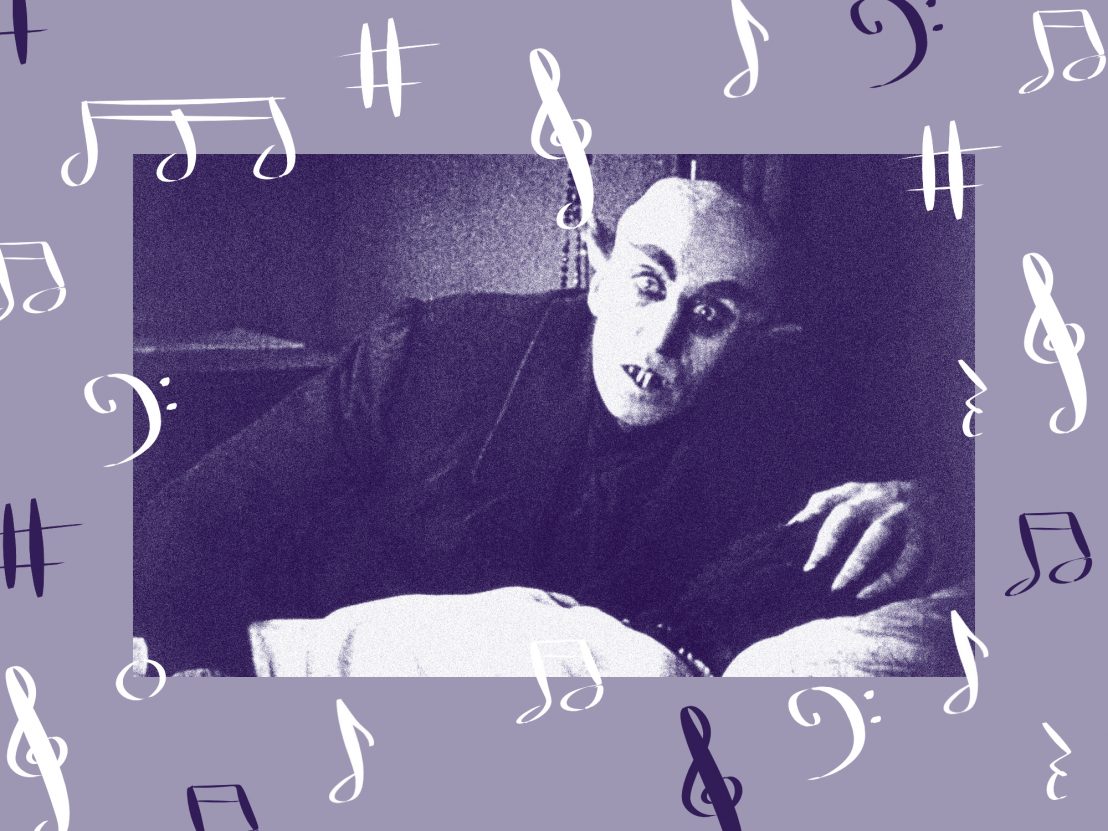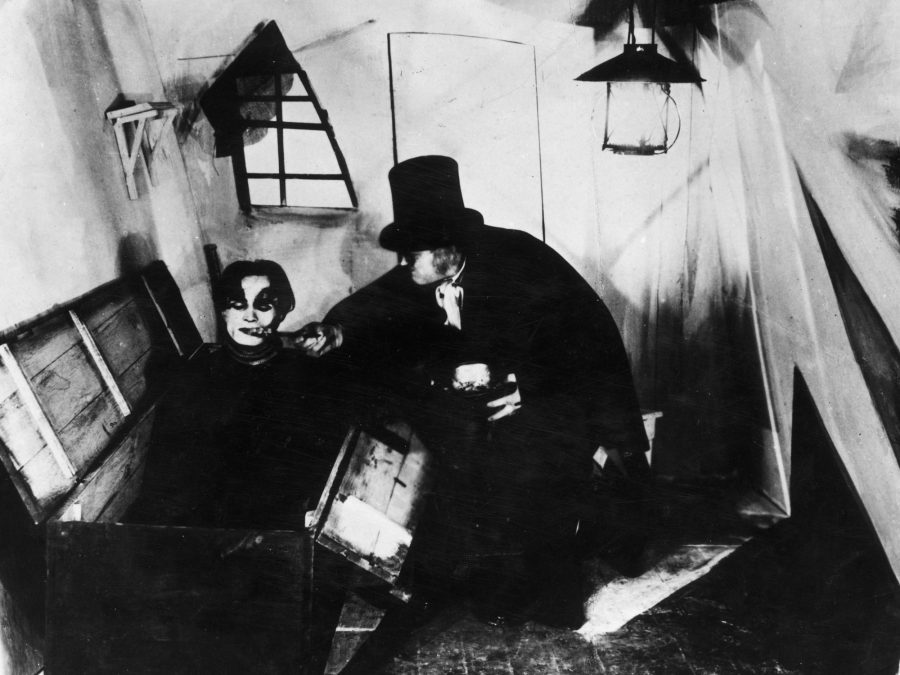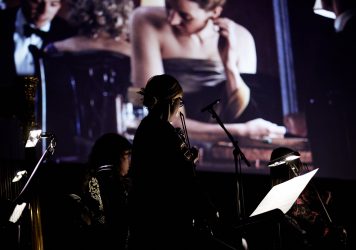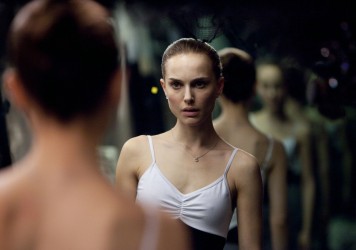
The lights go down and the audience succumbs to the auditorium’s quiet. Activity settles in anticipation as the familiar title card ‘Our Feature Presentation’ appears onscreen. I am used to nestling back in my centre-middle seat but on this occasion, I am standing at the front of the cinema, stage right of the screen beside an upright piano which is gutted to reveal its insides. I lift my viola, touching the bow down on the strings as the film begins.
For the last year, I have been improvising scores for silent films on viola at London’s Prince Charles Cinema. My first performance took place in Oxford on Halloween 2022. I had not seen F. W. Murnau’s Nosferatu for over ten years and was astonished to discover in this intense viewing scenario how vividly I remembered the composition of every frame, the way in which each sequence unravels towards the film’s tragic resolution. Murnau’s virtuosity as a filmmaker might be more apparent in later works such as Der Letzte Mann, Faust or Sunrise, but there is something singularly unnerving about the earlier film’s doomed atmosphere and Max Schreck’s performance as Count Orlock, inspired by Bram Stoker’s ‘Dracula’.
With their nefarious customs and absence of a reflection, vampires have become symbols of otherness, creatures onto which anything can be painted. It is difficult to ignore the antisemitic stereotypes present in Schreck’s portrayal drawn from Stoker’s source novel, whether intended as being ironic or genuinely horrific. When contemplating the film now, I wonder how much Murnau, a gay man whose Jewish partner Hans Ehrenbaum-Degele was killed on the Eastern Front in 1915, appropriates these stereotypes through horror and humour (“Your wife has a lovely neck”) in light of prevailing antisemitism and homophobia. Musical improvisation has become a productive method to explore this further, thinking through making.
Improvisation has always allowed me to germinate ideas across different mediums, investigate sound production on my instrument and hone my craft without tension or fear in performance. Any expressive gesture can be embellished into a motivic device for thematic development: in the case of soundtracking silent films, these are ‘leitmotifs’ or character’s themes which evolve with them on their journey, inspired by the cue sheets once distributed with film prints.
This craft resembles theatrical performance as I attempt to embody the experience of each character, responding to the events of an unveiling narrative in their mannerisms. Every time I soundtrack a film I wonder if the characters onscreen might react spontaneously, altering their fate. It is a deeply personal process, physically demanding over the course of a feature film’s duration and a productive method of sustaining creative intention. It also requires a sense of responsibility akin to adhering to the desires of a composer, in this case being in service of a film and the lives of its characters.

Improvising to Nosferatu inspired me to develop a musical language that enters into a conversation with films from this era. The distinctive character and yearning melodic tone of the viola embody the heightened lives of characters in the German Expressionist silent films on which I have been focussing. The fragility of this instrument, a coffin-like box with attached strings held in perpetual tension, promises a material encounter akin to that of celluloid passing through the gate of a projector. Adding a score to these works materialises the action of a scene, drawing it into the present for contemporary audiences and embellishing the purely abstract nature of these soundless films.
Klezmer music has influenced my approach to improvisatory play, employing folk techniques to draw out the dance-like quality of motion onscreen, and my experiences as a chamber musician have also impacted my attitude towards musical interpretation. Nosferatu is a symbolic materialisation of the ‘enemy alien’, a term which was used to label my great-grandparents when interned in prisoner-of-war camps in the United Kingdom after fleeing anti-Jewish violence in Vienna in 1938. Arnold Schoenberg, the founding member of the Second Viennese School of Composers, fled to the United States from Berlin for similar reasons in 1933.
Written between 1897 and 1936, the angular harmonic language of Schoenberg’s String Quartets, at once aggressive, intensely passionate and tender, seem to evoke the painted shadows that penetrate the sets of Robert Wiene’s The Cabinet of Dr. Caligari. Musical compositional techniques derived from these quartets inform my structural approach to developing motivic material over the course of a feature film from the same era. Whilst performing, I am always excited to uncover details of a film through the unexpected interplay of personal references, reconsidered for each film I accompany.
It is thrilling to connect with people of all ages who have journeyed to watch these hundred-year-old works projected on the big screen. When chatting with audience members after a screening I always wonder about the different environments in which they might have first encountered these films accompanied by a diverse range of musical interpretations. With origins in literature, poetry, theatre and symphonic forms, silent film generously extends beyond the realm of the cinema auditorium. I feel that it is necessary to blend contemporary classical music performance with moving images at a time when the live experience of both mediums has been challenged. Great efforts have been made to broaden the demographic of classical music concertgoers to little avail and online streaming has impacted the dedication of cinema attendees. It is fantastic that film has become more accessible but it would be a great loss if such collective cultural experiences disappeared altogether. The ‘event’ screening has garnered refreshed interest post-pandemic with the success of films shown on celluloid and varied programmes curated by repertory cinemas engage with film’s youthful history and question its future.
Watching silent films over and over in preparation for upcoming shows, I notice the subtle behaviours of actors onscreen beyond the main direction of a scene: details which might reveal something of their inner life. As no one on screen is still alive, I feel it is appropriate to accompany their actions with an instrument made in their lifetime. Live improvisation provides those onscreen with a voice and new life which is extinguished almost as soon as it is realised, revealing the beautiful necessity and desperate futility of playing with ghosts.
Published 14 Nov 2023

Michael O’Shea’s The Transfiguration builds its fantasy before shattering it with real-world adult truths.

Conductors and longtime friends Hugh Brunt and Robert Ames reveal how they helped bring Jonny Greenwood’s mesmerising score to life.

From Black Swan to High-Rise, the British composer reveals how he approaches making music for the movies.